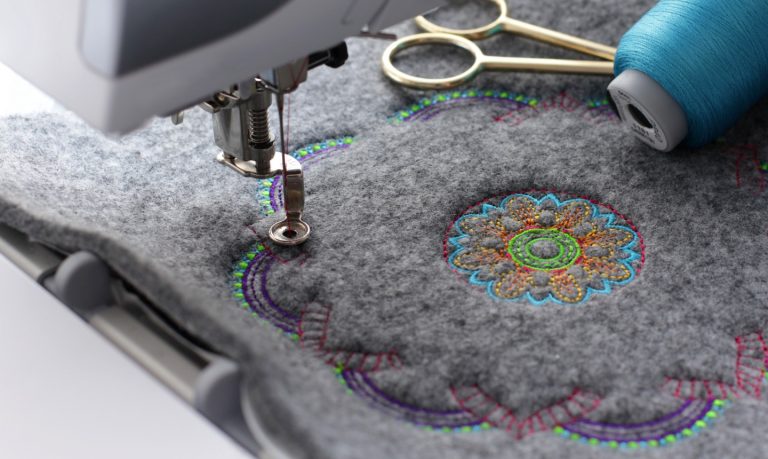Finest Digitizing for Embroidery: Boost Your Projects
Finest Digitizing for Embroidery: Boost Your Projects
Blog Article
Mastering the Needlework Digitizing Process: Your Ultimate Guide
Needlework digitizing is a meticulous craft that requires precision and expertise to convert elaborate styles right into electronic formats for maker embroidery. As craftsmens start this trip to understand the needlework digitizing procedure, a thorough understanding of the essentials sets the foundation for excellence. Nonetheless, beyond the rudimentary expertise exists a realm of sophisticated software program, specialized tools, and nuanced methods waiting to be discovered. By diving into the nuances of digitizing, one can open a world of innovative opportunities and elevate their embroidery projects to new heights.

Comprehending Embroidery Digitizing Basics
Needlework digitizing basics form the structure whereupon intricate layouts are equated into machine-readable formats for specific sewing. This initial action in the embroidery digitizing procedure is essential for making sure that the final stitched item is a faithful depiction of the initial design. Recognizing embroidery digitizing fundamentals involves grasping essential principles such as stitch kinds, stitch direction, thickness, padding, and draw payment.
Stitch kinds play a vital function in establishing the aesthetic and textural result of the stitched style. By picking the proper stitch kind, whether it be satin, fill, or running stitch, digitizers can accomplish the wanted effect and enhance the general top quality of the needlework. Furthermore, sew instructions affects the flow and measurement of the design, while density figures out the spacing and protection of the stitches.
Furthermore, underlay stitching offers security to the layout by protecting the material and stopping distortion throughout the embroidery process. Pull settlement is one more crucial factor to consider to combat the natural tendency of fabric to contract when sewn. Mastering these needlework digitizing basics is fundamental for creating professional-quality embroidered products.
Picking the Right Digitizing Software
Choosing the suitable digitizing software program is a crucial choice that significantly impacts the performance and high quality of the embroidery digitizing process. Digitizing for Embroidery. When picking the appropriate digitizing software application, it is vital to think about variables such as the complexity of styles you intend to develop, the user-friendliness of the software application, the degree of client support supplied, and the compatibility with your needlework device
There are numerous digitizing software options readily available in the marketplace, ranging from standard programs for beginners to sophisticated software program for professional digitizers. Some prominent selections include Wilcom EmbroideryStudio, Hatch Needlework Software, and PulseID. These software application bundles provide a large range of devices and functions to assist you develop intricate styles effortlessly.
Prior to making a choice, it is advisable to discover the various software application choices via totally free tests or demonstrations to figure out which one best suits your demands. Furthermore, checking out reviews and looking for suggestions from skilled digitizers can offer important understandings right into the strengths and weak points of each software plan (Digitizing for Embroidery). By meticulously reviewing your requirements and contrasting the attributes of various digitizing software application, you can make an informed choice that enhances your embroidery digitizing process
Digitizing Devices and Methods

Optimizing Style Settings for Embroidery
Understanding the ins and outs of style settings is fundamental in accomplishing optimal results in the needlework digitizing process, building upon the structure laid by recognizing digitizing devices and strategies. When optimizing design settings for needlework, it is crucial to think about aspects such as stitch kind, thickness, rug, draw payment, and enrollment. Registration setups align different aspects of the layout accurately, keeping overall style honesty.

Troubleshooting Common Digitizing Issues
When running into typical digitizing issues throughout the embroidery process, it is vital to comprehend the root triggers and execute reliable solutions without delay. One usual problem is stitch thickness issues, where stitches may be as well thick, creating the fabric to pucker, or as well thin, leading to gaps in the style. Readjusting the stitch thickness setups in the digitizing software application can help solve this problem.
One more frequent obstacle is thread breaks throughout the needlework procedure. This can take place as a result of different factors such as inaccurate tension setups, boring needles, or utilizing low-quality thread. Ensuring correct maintenance of the embroidery device, including regular needle modifications and stress changes, can minimize the occurrence of thread breaks.
Furthermore, design registration errors can cause misaligned elements within the needlework style. Examining the layout placement in the digitizing software program and making necessary modifications before stitching can assist in preventing this problem. By attending to these usual digitizing issues without delay and effectively, you can make sure a smoother embroidery process and high-quality finished items.
Verdict
To conclude, mastering the embroidery digitizing process requires a strong understanding of the fundamentals, the right selection of software application, and expertise of tools and techniques. Maximizing design setups and fixing important site typical digitizing issues are crucial action in making certain premium embroidery outcomes. By more tips here adhering to these actions vigilantly, one can attain precision and efficiency in the digitizing procedure.
Report this page